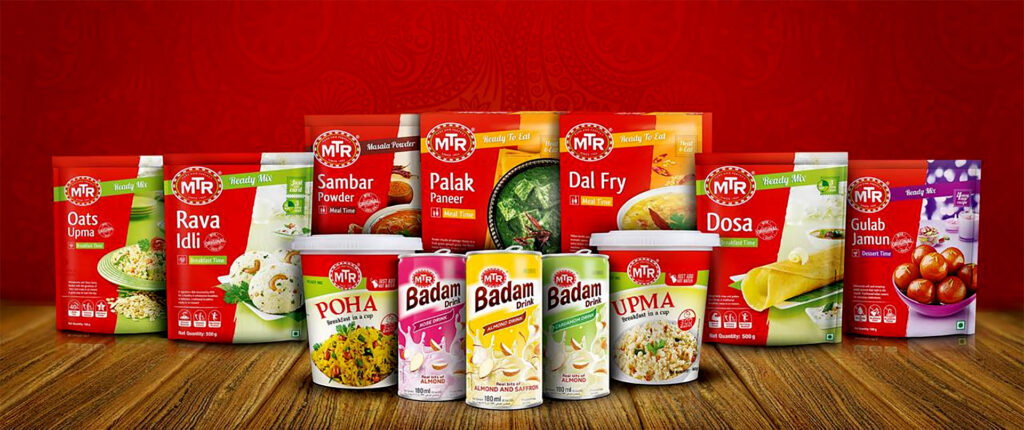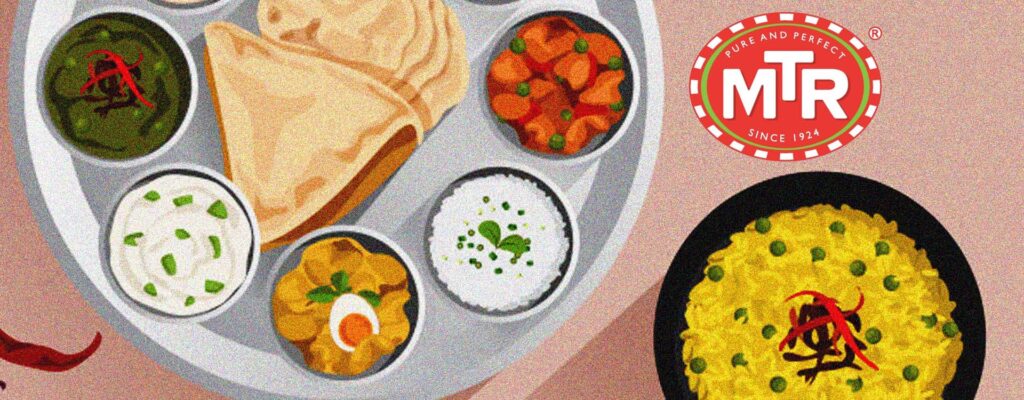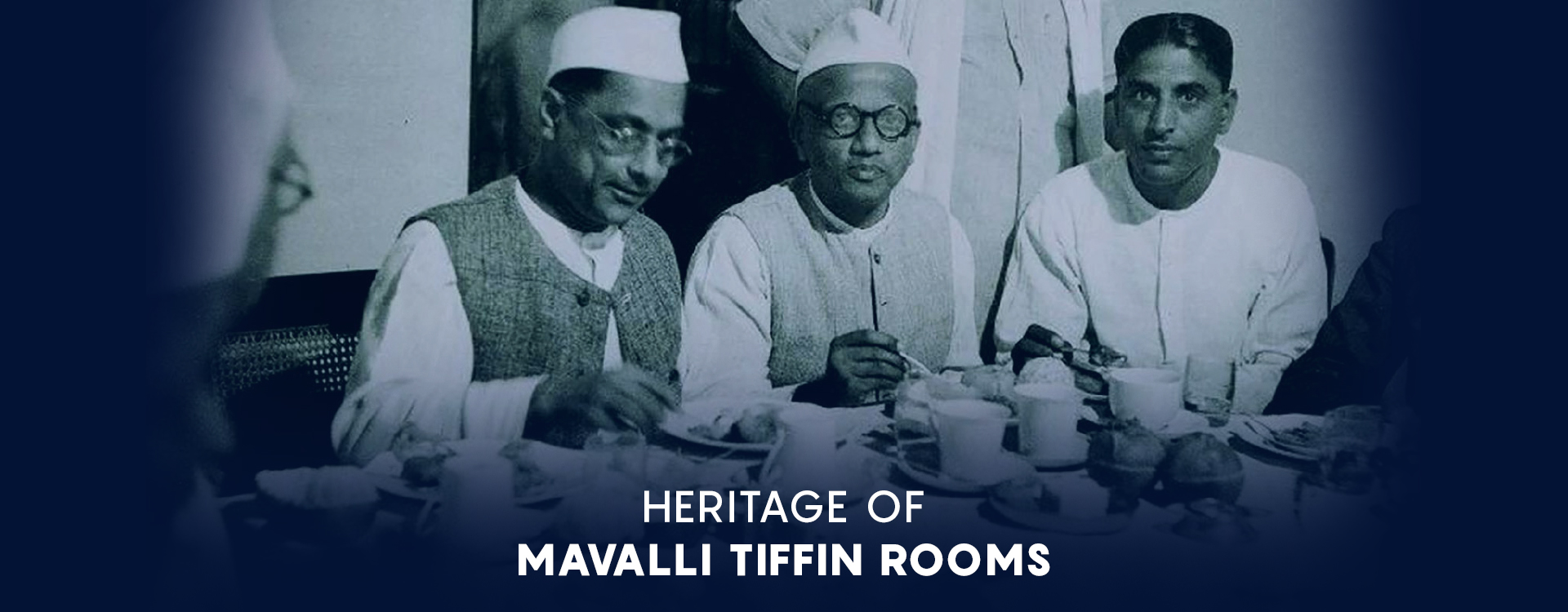From humble beginnings come great things. Little did brothers Yajnanarayana Maiya and Ganappayya Maiya know that the journey they would be embarking upon would create a historical legacy brand standing tall for 97 years and counting. After working as household cooks in 1924, Maiya brothers donned the entrepreneurial hat back in those days with Mavalli Tiffin Room (MTR) in Bangalore. What made the small restaurant the hottest spot in the city was value for money, savoury food and high standard of hygiene.
This simple philosophy has been the pillar of growth for brand MTR as generations kept walking the same path for decades to create a multi-crore brand.
Creating an Ever-Lasting Reputation
Since day one, the restaurant was abuzz with hustle and bustle of locals coming in to get the taste of home food. Besides a five-course meal at minimal price and extreme clean standard, what kept them coming back for more was their policy of ‘no favouritism’. The restaurant queue did not discriminate, be it a politician or a clerk. People experienced a sense of comfort without any over the top effort by the restaurant. Soon, it became a ‘must place to visit’ when in Bangalore.
In 1968, Yajnanarayana Maiya passed away and the pedals of the restaurant were taken over by his nephew, Harishchandra Maiya. Yajnanarayana Maiya’s son, Sadananda Maiya also joined in a few years later. The restaurant business today is run by his three children: Hemamalini Maiya, Vikram Maiya and Arvind Maiya.
Then came the emergency, which became the reason behind inception of MTR Foods. The new policy required every restaurant to conform to prices set by the government, which were extremely low. The family stood by its reputation and refused to follow the course as it would have required them to compromise on the quality of the food they offered and go against their reputation. The restaurant was shut.
Pivoting at The Right Time: Inception of MTR Foods
When one door closes, another opens. After shutting down the restaurant business, Sadananda Maiya, who was at the helm of the business, got the idea to leverage the brand name and offer something completely different – Food in a packet.
He got his former employees together to work on packaging a mix of popular breakfast and snacks like Rava Idili, to begin with. The idea became an instant hit. The restaurant had also reopened, but Maiya continued to manufacture the mix and ventured into other packaged foods like spices, special spice mixtures, pickles as well under new identity – MTR Foods Ltd. The products were well accepted in the market due to the already built trusted brand of MTR and its reputation for purity.
The products had started reaching the shelves of the local grocery stores by 1980s and it was time to expand the vision to be an indispensable companion in every kitchen to help create authentic and delicious Indian food.
‘‘
When it comes to Indian cuisine, authenticity holds a lot of importance to continue its relevance. This aspect has been well taken care of by MTR over the years.
Stepping Out of The Comfort Zone
By 1983, the company had started building a network of retailers outside the city, including Madras, Hyderabad, and Vijayawada.
Maiya had realised that if he has to master the packaged food industry, he needs to work on the packaging as well, besides the product inside. The visibility factor was missing, though he was leading the market share in Indian packed food back then. Staying attuned to the latest technological innovations, the company introduced polyester poly standy pack, the first of its kind in India. The upright bags greatly increased the brand’s visibility on store shelves.
The company actively started sorting out new markets and began to push towards becoming a more prominent company in the early 1990s.
Where was the challenge? The market back then was highly fragmented with mere two other players in the packaged ready-to-eat food industry – Hindustan Lever Ltd and Swiss food giant Nestlé. The advantage MTR had built for itself was the ‘Indianness’ in its products which the other two lacked.
Riding the Convenience Wave: From Novelty to a Necessity
Come 90s, the city of Bangalore was bustling with young professionals from all across the country. It was time to “make the right move at the right time” as the market opportunity increased with rising incomes, demand for convenience food and ‘no time to cook’ situation.
It was a boom! The company solidified its 4Ps – Product, Place, Price and Promotion. MTR changed its structure in 1994 in order to accommodate future growth. When a company witnesses a market opportunity of that big a scale, streamlining the processes is the first target. You need to set your house in the right order.
The firm was broken into two divisions, one for its main food lines, spices, and vermicelli, and another to specialise in chips and other snacks. As the company increased its scale to tackle the southern India boom, it only seemed right to expand the market. An export division was also launched by this time to explore foreign waters.
Let’s Travel North!
MTR had well captured the southern market and it was time to move up north. You cannot expect customers of a different region to be receptive of a whole new cuisine on an everyday basis. MTR had the challenge to first win over the market and create a trusted name in something more receptive.
The company needed to come up with a product that had no regional connotation. In 1998, MTR launched Softy ice cream cone, an immediate hit. But why will I choose a new brand from south India when I have the taste of global products like Kwality Walls?
Two things worked in MTRs favour – Reputation for purity and competitive pricing. The company was able to price its ice cream competitively against Hindustan Lever and still maintain a high profit margin.
Once it gained the market trust, MTR started digging deep into north Indian recipes to introduce new products. It was now the right time to add the regional connotation after gaining the market trust.
It expanded its line of snack foods such as chips and fries besides a new line of ready-to-eat meals based on north Indian recipes.
The company did not lose focus on packaging. It wanted to make the meals extremely easy to prepare, leaving behind no cooking mess and introduced a retort pouch, which was simply dropped in boiling water for a few minutes to heat the food.

What Doesn’t Work Here, Can Be A Hit Somewhere Else!
MTR’s frozen foods traction remained low as the distribution network was weak nationwide. Since the beginning, the company ‘took it slow’ when it came to frozen meals, but started exploring the export market with Australia, Singapore, and other Asian and Pacific countries.
It is not easy to penetrate foreign markets, especially when you have a big target. But there was a potential, a good product and demand.
The company had to do few things right, beginning with surpassing export barriers. It managed to receive the ISO 9002 certification and global food safety program, the Hazard Analysis Critical Control Point.
Second, it looked for partners to sell their products. It was able to get its foods into the United States through an arrangement with the grocery chain Kroger and began exporting cooking sauces to England. Similar ventures were made in the European markets.
Time for The Next Big ‘Super’ Move
By 2000, Maiya had set his eyes on an ambitious plan. But for implementation of a successful plan, you need capital besides the brains.
The company raised cash by selling 20% stake to an investment group in Mauritius, Magnus Capital. In 2002, Magnus Capital reduced its stake in MTR to 14%, and J.P. Morgan Partners, a division of J.P. Morgan Chase, paid $4 million for a 28% stake in the firm.
The capital infusion was aimed at opening a string of fast-food vegetarian restaurants. Tweaking the plan a little, it went for ‘super shops’, which would amalgamate both its restaurant and packaged food business. It aimed at creating a place that would have MTR’s ready-to-eat meals that the customers could buy and take home and a restaurant area where hot food was served.
The first super shop was opened in Bangalore in 2002.
Taking The ‘Scandinavian’ Turn: Contemporary Twist to Old Heritage
A single person or a few people can’t run a company once you hit a certain size. Scaling requires investment in people and a decentralised decision-making. It was time for MTR to do the same.
In 2007, Norwegian conglomerate Orkla bought MTR for $100 million in one of the most talked-about acquisitions of the time. Several suitors, including ITC Foods, ConAgra, Tata Coffee, and US spices giant McCormick had kicked the tyres before Orkla triumphed.
What was in for MTR Foods as a brand? By 2007, MTR had grown it into a Rs 170 crore company with about 130 products and a strong foothold in the national instant mixes market. Orkla’s investment would extend the MTR product line which included ready-to-eat curries, spice mixtures and snack foods besides increasing the brand presence in foreign supermarkets.
Moving forward, MTR had to sweep in new markets as the competition soured and Orkla would have helped it achieve the same. The core offering in making Indian food convenient remained the same while a new corporate identity was created to enter new segments. Its entry into Indian confectionery market with Laban is the finest example.
What followed the deal was a complete re-classification and re-characterisation of all the products under meaningful consumer propositions.
‘‘
Two things always worked in MTRs favour - Reputation for purity and competitive pricing. The company was able to price its ice cream competitively against Hindustan Lever and still maintain a profit margin
Out-and-Out MTR Rebranding
The changing consumer landscape required MTR to reach out to consumers more effectively and ‘contemporise’ the brand. MTR had a product-led portfolio which needed to shift towards more meaningful consumer propositions as preferences changed.
It was not just MTR idli or rice idli or rava idli or vada mix anymore, it was essentially breakfast mix where the consumer understood what occasion he/she can buy this product for. It was not just gulab jamun but sweet mixes or sambar powder or rasam powder but masalas. The brand was now based on meal occasions with products reaching out to our specific target audiences.
Rigorous marketing followed the suit. The logo was re-structured, the fonts were contemporised without completely moving away from the original identity.
This was also followed by a change in track. There was a huge segment of millennials that the company could not afford to miss. This led to the addition of the MTR 3-minute breakfast range. A whopping amount of Rs 40 crores was spent on its branding. The core standing of the brand to “make Indian food convenient” stood tall with an infusion of a young twist and real-life experience that millennials go through every day.
What Worked for MTR All These Years?
“A good reputation is more valuable than money”. MTR, which started out as a restaurant, managed to hold a reputation as a trusted brand for decades due to the credibility created by its founders 97 years back.
The past of having the standardised eatery makes the brand still credible to the public. It goes like “The product will be good because it is by MTR”. Of course, this is coupled with good brand strategies and offerings.
It was the brand’s unwavering obsession with quality, hygiene and convenience that made it what it is today. Back in the days itself, Yajnarayana Maiya used to distribute small booklets on health, proper eating habits and recipes. He introduced the system of opening up the kitchen to the scrutiny of any customer who was interested. In fact, for a long-time customer entered the restaurant through the kitchen so that by default they saw with their own eyes the hygienic methods of food preparation.
This passion became the company’s competitive advantage.

A Multi-Category Approach but Yet Single
MTR’s industry peers like Everest, Aachi’s, Shakti, and Eastern were all largely running single categories. MTR was the only multi-category company starting from breakfast, dessert, snacking to drinks.
However, everything they make belongs to one single category: Staple diet. The customer base for all the products made by MTR is wide because the items belong to their staple diet.
Taste of Indian cuisine In A Packet
When we looked at the packaged food industry a few years back, the options were limited to pastas, pizzas, noodles, oats. A lot of India’s food businesses have been built around Western and Chinese cuisines.
With its India proposition, MTR grabbed the first mover’s advantage by offering idli, rava idli, upma, and poha, Indian meals, popular snacks like banana chips to cornflakes mixture and local drinks.
When it comes to Indian cuisine, authenticity holds a lot of importance to continue its relevance. This aspect has been well taken care of by MTR over the years. Besides technical experts, the company has a dedicated team of chefs continuously working on the recipes. For a Tamil Nadu sambar, MTR spent four years to find out the denominator that matches across millions of households and visited 3,500 consumers before they came up with the recipe.
Similarly, Masala Karam has been co-created with Telugu mothers, after gathering consumer insights from thousands of households. Affordability and nominal cost all throughout the years was also a big factor for the brand’s success in penetrating markets. People from all strata can easily afford the food mixes from MTR.
It’s the constant focus on innovation and finding product relevance amidst constantly evolving consumer needs that has helped this legacy brand ‘survive and thrive’ all these years and will continue to do so with its ‘new recipes’ for success.





Excellent Analysis, Naina!
Loved the write-up and the depth of research. All these years i never even bother to know the full form of MTR (Maravalli Tiffin Rooms) which I got to know today. What a great legacy!
Please keep posted with such insightful columns.
Thanks,
Ambareesh